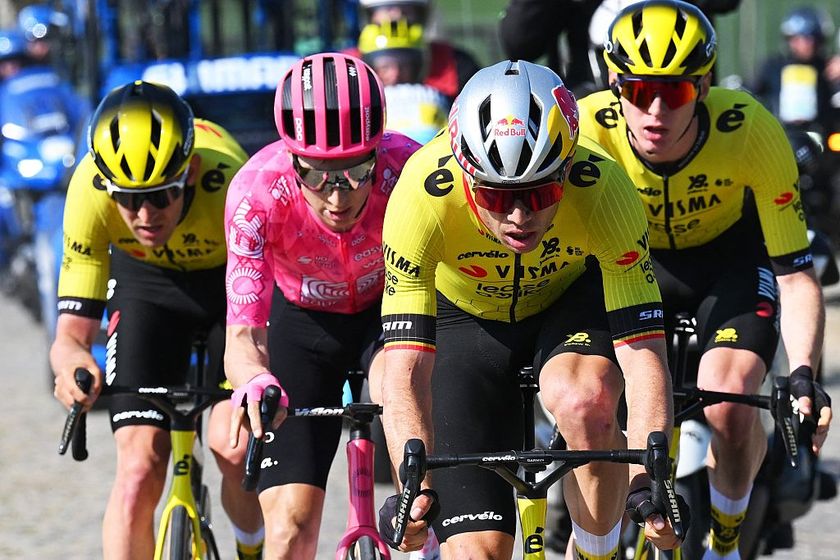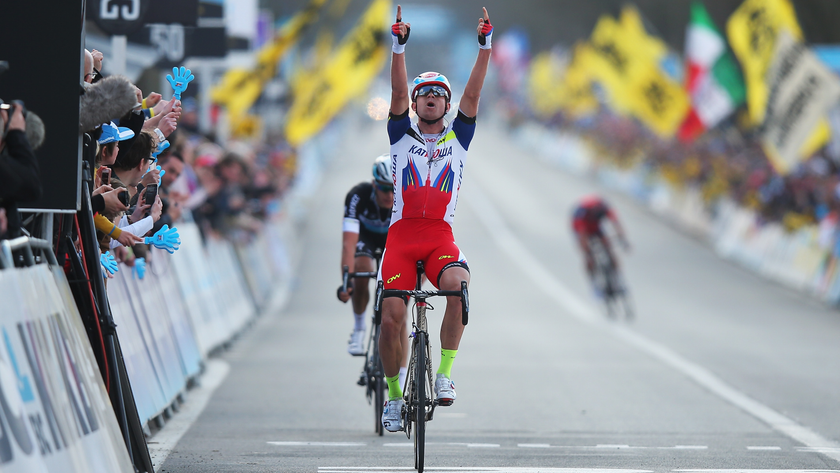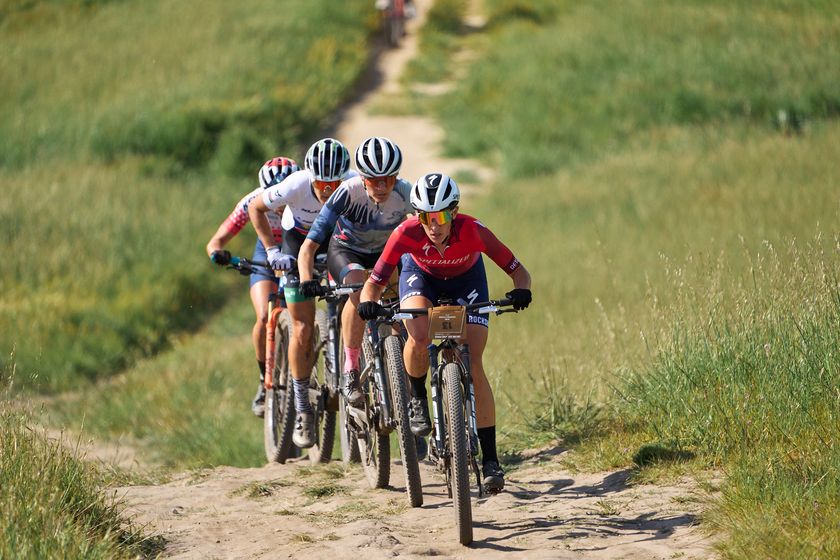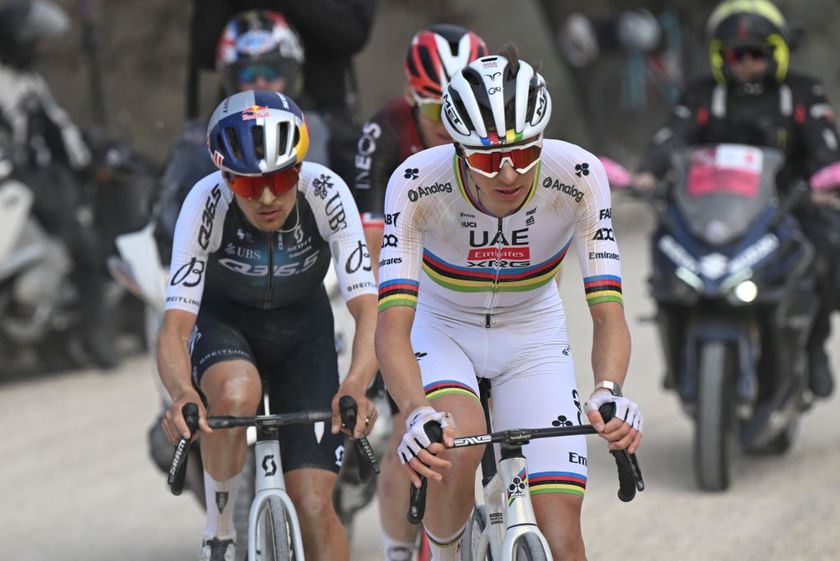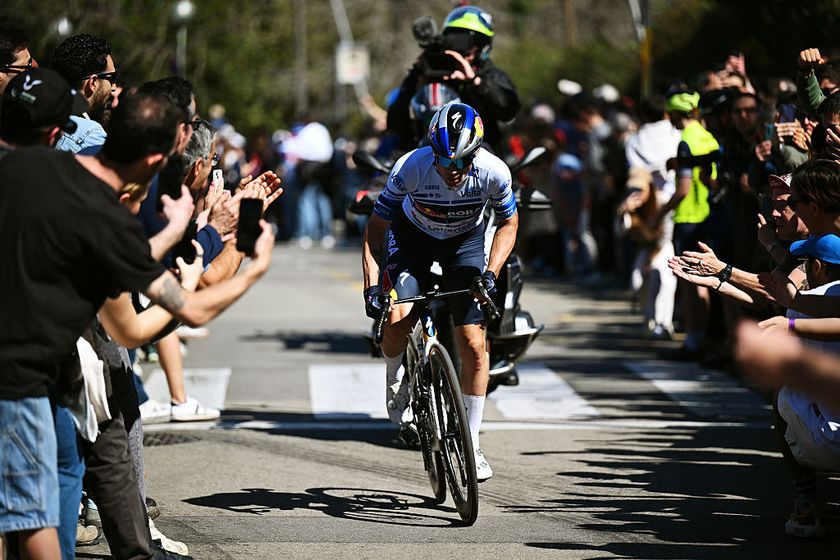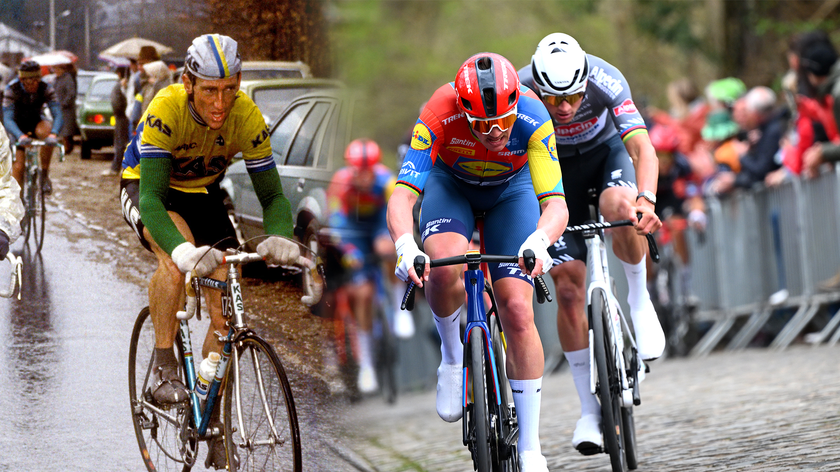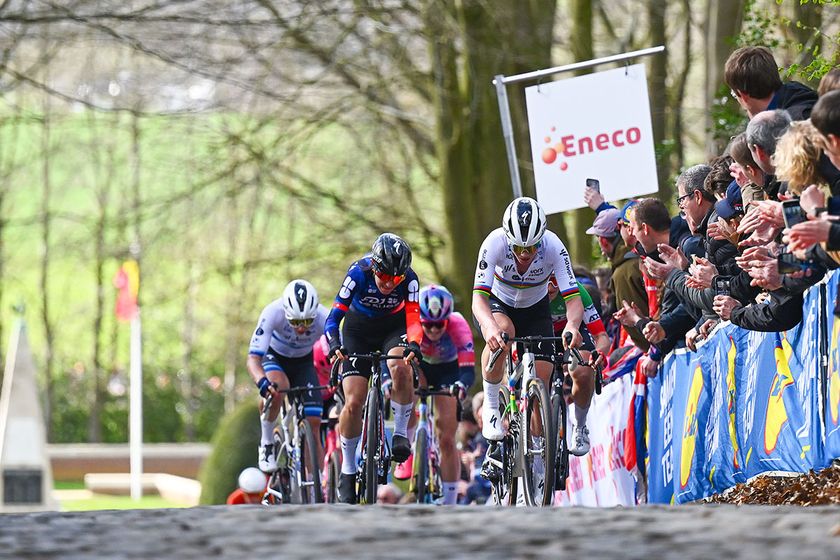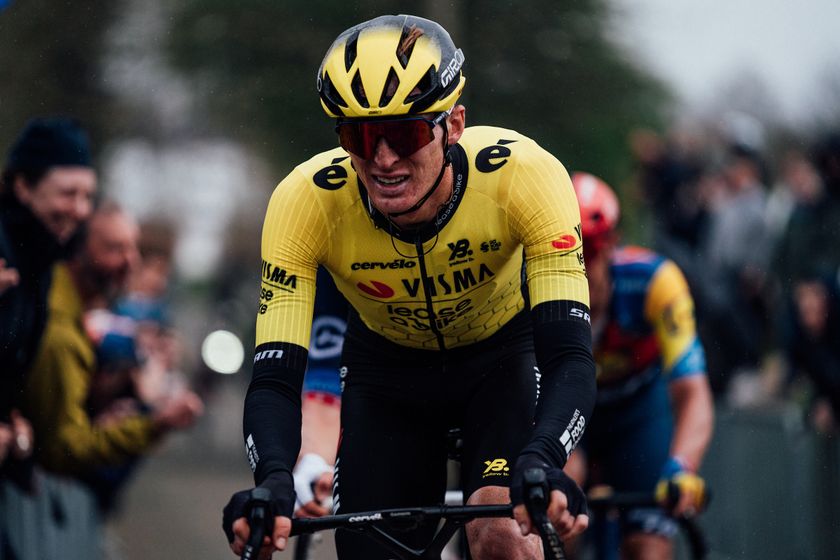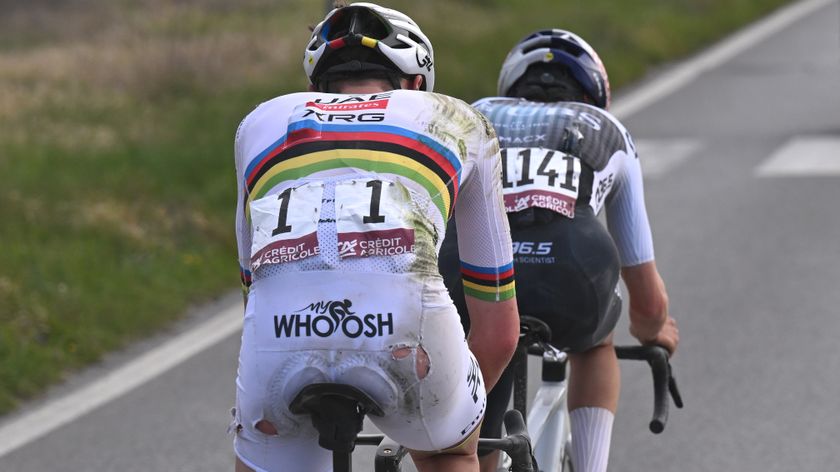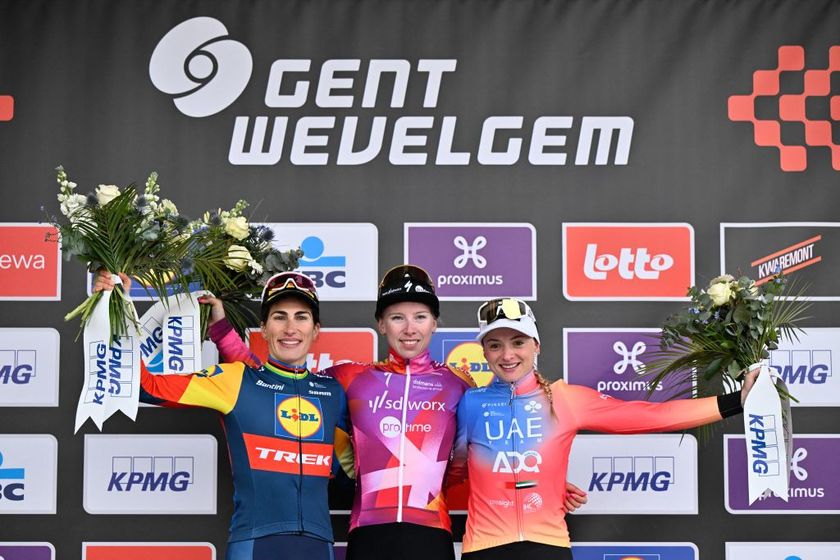Fitness questions and answers for January 24, 2005
Got a question about fitness, training, recovery from injury or a related subject? Drop us a line at...
Form & Fitness Q & A
Got a question about fitness, training, recovery from injury or a related subject? Drop us a line at fitness@cyclingnews.com. Please include as much information about yourself as possible, including your age, sex, and type of racing or riding. Due to the volume of questions we receive, we regret that we are unable to answer them all.
Carrie Cheadle, MA (www.carriecheadle.com) is a Sports Psychology consultant who has dedicated her career to helping athletes of all ages and abilities perform to their potential. Carrie specialises in working with cyclists, in disciplines ranging from track racing to mountain biking. She holds a bachelors degree in Psychology from Sonoma State University as well as a masters degree in Sport Psychology from John F. Kennedy University.
Dave Palese (www.davepalese.com) is a USA Cycling licensed coach and masters' class road racer with 16 years' race experience. He coaches racers and riders of all abilities from his home in southern Maine, USA, where he lives with his wife Sheryl, daughter Molly, and two cats, Miranda and Mu-Mu.
Kelby Bethards, MD received a Bachelor of Science in Electrical Engineering from Iowa State University (1994) before obtaining an M.D. from the University of Iowa College of Medicine in 2000. Has been a racing cyclist 'on and off' for 20 years, and when time allows, he races Cat 3 and 35+. He is a team physician for two local Ft Collins, CO, teams, and currently works Family Practice in multiple settings: rural, urgent care, inpatient and the like.
Fiona Lockhart (www.trainright.com) is a USA Cycling Expert Coach, and holds certifications from USA Weightlifting (Sports Performance Coach), the National Strength and Conditioning Association (Certified Strength and Conditioning Coach), and the National Academy for Sports Nutrition (Primary Sports Nutritionist). She is the Sports Science Editor for Carmichael Training Systems, and has been working in the strength and conditioning and endurance sports fields for over 10 years; she's also a competitive mountain biker.
Eddie Monnier (www.velo-fit.com) is a USA Cycling certified Elite Coach and a Category II racer. He holds undergraduate degrees in anthropology (with departmental honors) and philosophy from Emory University and an MBA from The Wharton School of Business.
Eddie is a proponent of training with power. He coaches cyclists (track, road and mountain bike) of all abilities and with wide ranging goals (with and without power meters). He uses internet tools to coach riders from any geography.
Get The Leadout Newsletter
The latest race content, interviews, features, reviews and expert buying guides, direct to your inbox!
David Fleckenstein, MPT (www.physiopt.com) is a physical therapist practicing in Boise, ID. His clients have included World and U.S. champions, Olympic athletes and numerous professional athletes. He received his B.S. in Biology/Genetics from Penn State and his Master's degree in Physical Therapy from Emory University. He specializes in manual medicine treatment and specific retraining of spine and joint stabilization musculature. He is a former Cat I road racer and Expert mountain biker.
Since 1986 Steve Hogg (www.cyclefitcentre.com) has owned and operated Pedal Pushers, a cycle shop specialising in rider positioning and custom bicycles. In that time he has positioned riders from all cycling disciplines and of all levels of ability with every concievable cycling problem.They include World and National champions at one end of the performance spectrum to amputees and people with disabilities at the other end.
Current riders that Steve has positioned include Davitamon-Lotto's Nick Gates, Discovery's Hayden Roulston, National Road Series champion, Jessica Ridder and National and State Time Trial champion, Peter Milostic.
Pamela Hinton has a bachelor's degree in Molecular Biology and a doctoral degree in Nutritional Sciences, both from the University of Wisconsin-Madison. She did postdoctoral training at Cornell University and is now an assistant professor of Nutritional Sciences at the University of Missouri-Columbia where she studies the effects of iron deficiency on adaptations to endurance training and the consequences of exercise-associated changes in menstrual function on bone health.
Pam was an All-American in track while at the UW. She started cycling competitively in 2003 and is the defending Missouri State Road Champion. Pam writes a nutrition column for Giana Roberge's Team Speed Queen Newsletter.
Dario Fredrick (www.wholeathlete.com) is an exercise physiologist and head coach for Whole Athlete™. He is a former category 1 & semi-pro MTB racer. Dario holds a masters degree in exercise science and a bachelors in sport psychology.
Scott Saifer (www.wenzelcoaching.com) has a Masters Degree in exercise physiology and sports psychology and has personally coached over 300 athletes of all levels in his 10 years of coaching with Wenzel Coaching.
Kendra Wenzel (www.wenzelcoaching.com) is a head coach with Wenzel Coaching with 17 years of racing and coaching experience and is coauthor of the book Bike Racing 101.
Steve Owens (www.coloradopremiertraining.com) is a USA Cycling certified coach, exercise physiologist and owner of Colorado Premier Training. Steve has worked with both the United States Olympic Committee and Guatemalan Olympic Committee as an Exercise Physiologist. He holds a B.S. in Exercise & Sports Science and currently works with multiple national champions, professionals and World Cup level cyclists.
Through his highly customized online training format, Steve and his handpicked team of coaches at Colorado Premier Training work with cyclists and multisport athletes around the world.
Brett Aitken (www.cycle2max.com) is a Sydney Olympic gold medalist. Born in Adelaide, Australia in 1971, Brett got into cycling through the cult sport of cycle speedway before crossing over into road and track racing. Since winning Olympic gold in the Madison with Scott McGrory, Brett has been working on his coaching business and his www.cycle2max.com website.
Richard Stern (www.cyclecoach.com) is Head Coach of Richard Stern Training, a Level 3 Coach with the Association of British Cycling Coaches, a Sports Scientist, and a writer. He has been professionally coaching cyclists and triathletes since 1998 at all levels from professional to recreational. He is a leading expert in coaching with power output and all power meters. Richard has been a competitive cyclist for 20 years
Andy Bloomer (www.cyclecoach.com) is an Associate Coach and sport scientist with Richard Stern Training. He is a member of the Association of British Cycling Coaches (ABCC) and a member of the British Association of Sport and Exercise Sciences (BASES). In his role as Exercise Physiologist at Staffordshire University Sports Performance Centre, he has conducted physiological testing and offered training and coaching advice to athletes from all sports for the past 4 years. Andy has been a competitive cyclist for many years.
Michael Smartt (www.cyclecoach.com) is an Associate Coach with Richard Stern Training. He holds a Masters degree in exercise physiology and is USA Cycling Expert Coach. Michael has been a competitive cyclist for over 10 years and has experience coaching road and off-road cyclists, triathletes and Paralympians.
Kim Morrow (www.elitefitcoach.com) has competed as a Professional Cyclist and Triathlete, is a certified USA Cycling Elite Coach, a 4-time U.S. Masters National Road Race Champion, and a Fitness Professional.
Her coaching group, eliteFITcoach, is based out of the Southeastern United States, although they coach athletes across North America. Kim also owns MyEnduranceCoach.com, a resource for cyclists, multisport athletes & endurance coaches around the globe, specializing in helping cycling and multisport athletes find a coach.
Side cramps & Knee pain
Bike fit
Riding like a "pro"
Follow up to the HR/Power question.
Patella Tendon Strength Exercises
Upper Body Aches
Hematocrit
Side cramps & Knee pain
I am a male 16-year-old cat 5/junior road racer. I just joined a team and am going on their fast paced training rides. I have been riding since the beginning of last year and doing long but slow paced rides (60-100 miles 17 mph average). I have noticed that when I climb as fast as I can with a high cadence (90 to 100 rpm) and take turns taking a fast pull at the front, I get cramps in my side. Is there a certain position on the bike that I could take or a added workout to my schedule that may help?
I have a second problem too. Recently (past two months) on our long 80+ mile team rides I have been having knee pain in my left knee. And when I am on the trainer I notice that it feels that I should move my foot further up on the pedel. I got curious and so I looked at my legs and feet side by side relaxed and saw that not only did my left foot have a different angle but my left leg was longer than my right by about 1/8 of an inch. I've tried moving my cleat back on the shoe (nike shoes) but it won't move back far enough. I think, because I havent noticed the knee pain before, that the faster speeds of the group are pointing out problems with my bike fit or cleat placement for my longer left leg. Could you prescribe me a better bike fit or cleat position?
Adam
Steve Hogg Replies
G'day Adam,
Bike fit
I am a 43-year-old cyclist with 23 years experience as a serious cyclist. About nine years ago I was lifting a heavy object and felt a tear that I imagined to be a hernia. At the time I was not cycling and recovered quickly; I felt great until about four weeks later when I took a hard ride. Upon returning I began to feel pain just to the right of my pubis synthesis and radiating into my right testicle. This pain persisted for many months and ended up keeping me off the bike for several years.
When the injury is at it worst, sex also causes it to flair up. I had several exams for hernias but nobody was able to identify the problem. After some time and with the help of a practitioner of Astin Patterning (structural re-alignment work) I was able to go back to a very physical work routine, and after several years got back on the bike and rode extensively without problems for about three years. I was very fit and had been riding hard when after a ride the problem suddenly returned and kept me off the bike for four or five months. Same symptoms with lower right side back pain ( that I now believe may be the ilio-lumbar ligament).
Again, after several months I was able to ride again and return to a high level of fitness. I now seem to be in a pattern with the problem recurring annually. Last year I was riding my road bike 12-15 hours a week but could barely ride my mountain bike without stopping to stretch every 20 minutes. During this period I discovered that if I went to the Chiropractor every 10 days or so I would not have any pain. Seems that my right hip is rotated forward and that results in a functionally shorter right leg with upper body rotation slightly to the right. I also tend to have more tightness in my right hamstring and soreness in my inner thigh. I'm generally quite flexible and can easily place my palms flat on the ground with my legs locked. I had several specialists look at me over the years with no definitive diagnosis. I am now seeing a doctor who has confirmed my belief that the problem may be related to the ilio-lumbar ligament and he is treating it with prolotherapy.
I am well into the treatment and may be seeing some results but it's too early to tell. I also do yoga and incorporate techniques from Laughlin's book daily. I have begun to concentrate more on bike fit (far later than I should have ) as a part of the solution to my problem. I went to a bike fit specialist and brought my mountain bike. He moved my seat up over an inch and moved me forward significantly (I was riding a setback seatpost with the seat all the way back ). I think he was on the right track but didn't like the formulaic approach he took, which was to determine seat height by setting my leg at a 35° angle and place my knee directly over the pedal axle with a plumb bob. When I transferred his fitting to my road bike I found that the fore-aft position was already over the axle but my seat needed to go up about the same distance. So the main difference between the bike's fit was fore-aft position. The change in seat height was enough on my road bike that I actually had to buy a new frame. I started looking into bike fit issues and found cyclingnews and the information about dynamic fit.
I am currently trying to get back on the bike but have a bit of a catch-22 situation in regard to applying some of Steve Hogg's ideas. His seat height determination requires putting in multiple hard efforts on a 1 km hill to determine the proper setting. I am not sure I can do this without the injury flaring and don't want to start riding hard without getting the adjustment right for fear of re-injury. I felt that the seat height based on the 35° angle was a bit high because I think my hips were rocking a bit so I have lowered the seat a few mm. This places my legs at the point were my feet are about level with the ground when my crank is perpendicular to the ground and my knees are fully extended. I did ride on the road some and using the balance technique with my hands in the drop, arriving at a fore-aft position that resulted in my knees being about 1.5-2 cm behind the pedal axle. I'll try to dial that in more after I settle in on a final seat height. I have been doing 30 min to 1 hour on a trainer, trying to get back on the bike and have made these observations about my position.
1) I feel like my upper body rotates forward on the right side and I pull my right shoulder up and toward my neck.
2) I have always felt that I put more weight on the right buttocks and I can even see where the saddle has worn more on that side. There was more space between the horn of the saddle and my thigh on the left side. I have rotated the saddle slightly to the left and this seems to help.
3) It seems that I may not be pedalling symmetrically, and that the right side may be doing more of the work. My "feel" on the pedal also seems different with more weight on the right, and maybe my left leg feels like it may have to extend more. In general, the higher saddle position seems good but I know it needs fine-tuning. Is there a way to get it close without having to make a hard effort on the bike and risk re-injury? My cleat position is over the ball of my foot. Should I look into changing that, and also is there a chance that a shim would help with addressing any pedalling asymmetry? Once I get the position that I feel is right on my road bike I will need to transfer if to my mountain bike. Should I just duplicate my position there with regard to contact points. I ride a 17"steel hardtail (Independent Fabrications Deluxe) and a steel 54 cm Salsa La Raza road bike. I have given some thought to going to full suspension, thinking that a lessening of the pounding would help, but don't want to do that unless it is necessary. I do tend to do a lot of long, hard rides when I mountain bike so perhaps it would not be such a bad idea. Any help would be appreciated.
Jeff
Steve Hogg Replies
G'day Jeff,
Riding like a "pro"
Whether we like to admit it or not, most of us not only want to ride like a pro, but we want to look like a pro on the bike. This drives us to lower our stems, etc. to achieve that "look". Often this is vanity and a fool's errand.
But I have noticed something about the professionals that I want to ask about as it applies to bike fit and me. When I watch professionals, even though it appears that there are a wide variety of positions, if I slow the footage down, it seems that they all end up in a very similar place at the bottom of the stroke. Legs nearly extended, very powerful, very natural...etc. When I do my "form check" I notice that I appear to be in a position that puts me too far back as compared to them when I go through the downstroke. Is this something I should be concerned about as I begin to increase my miles and intensity?
Is it possible that I have become comfortable in a position that is at a genuine disadvantage? I seem to remember guys like Sean Kelly riding in positions which I though put them at a disadvantage. Bottom line: should us non-champions try to look like the pros? Should we be alarmed if we don't? At least when it comes to leg/knee position from as we go from the 3 o'clock to the 9 o'clock position?
Steve Hogg Replies
G'day Dean,
Follow up to the HR/Power question.
When I read: "What many athletes (and even some coaches) fail to realize is that heart rate does not trigger training adaptations. A quick way to make this point is to compare similar intensities (same % of VO2max) in swimming and running. The HR associated with this intensity will be higher while running than while swimming for a number of reasons (ie - smaller muscles used in swimming versus running, cooling effect of water, etc), yet the training adaptations will be similar. " - it lead me to ask the following:
If HR doesn't trigger training adaptations, then is HR merely a second-hand way to get a measure of the training effect you are having, with Power being a more direct way? Then wouldn't endurance rides ideally also be governed by power? I know HR on endurance rides is a better indicator compared to HR on intervals, but if I have an SRM, should my long rides be governed by watts ranges? Or to be blunt, if you have an SRM, should you EVER base a ride on HR? It sounds like you should just use HR as a way to see how much you are improving, in the same way you would use time, speed, or distance covered.
Also, what does the above quote mean for the infamous LT? I assume the more important LT number would be Watts? Are we looking at future where HR becomes obsolete?
Dean
Ric Stern Replies
Dean,
Eddie Monnier Replies
Good questions, Dean. Yes, HR is a proxy for intensity, and intensity dictates the training effect. There are coaches who prescribe Endurance workouts by power, but it's very difficult for an athlete to follow a wattage prescription over the course of an endurance ride, especially if s/he lives in anything other than a pancake flat, windless region. And HR works pretty well at lower intensities, so I prescribe HR for Endurance rides (but sometimes include wattage prescriptions as well, for example: "Ride 3-3.5 hours at HR 125-150. Include a 20- to 30-min climb at 280-300 watts").
Patella Tendon Strength Exercises
I have consistently battled patella tendon problems with my left knee. I have been fit to my bike twice over the past year to make sure all is well.
Presuming all is well with my bike fit and pedal locations, what are some non-weight exercises that I could do to help strengthen my tendon. Also, I typically cycle at higher cadences, not using the big gears.
Gene McLean
Lafayette,CA
Steve Hogg Replies
G'day Gene,
Upper Body Aches
I"m wondering if you can help me out here. I've been experiencing persistent aches in various parts of the upper body for almost a year now. They include:
1) Shoulder blades aches (the protruding bones in the upper back)
2) Neck aches (especially when I tilt my head to the left and/or right)
3) Lower back aches
In addition, I also constantly struggle with an uncomfortable feeling with my left leg/knee. My left leg just does not "feel right" and does not seem to give me the same kind of pedalling feeling I get from my right leg...due to that, I constantly have to consciously apply more power to my left leg (my master leg is my right leg). It also feels like I'm not "on-top" of my pedals.
I am 1.7m tall, 29 yrs...I also have a non-proportionate upper-lower body...thus I have a long upper torso but a short lower body. Thus I use a 125mm handlebar stem. I clock about 300km a week and am quite competitive.
Please advise on the possible causes to the persistent aches that I've been getting.
Edmund
Steve Hogg Replies
G'day Edmund,
Hematocrit
I'm a 22-year-old road cyclist who has been riding for one and a half years. I am currently doing my second base training. I have read a little about the hematocrit in cyclists and how it looks to be considered a fitness indication. I'd like to know:
1) What levels a strong rider would have
2) How may a cyclist raise their hematocrit just by training
3) What's the relation of between hematocrit and VO2 Max (if there is one)? Thanks very much for the assistance.
Christian
Curitiba - Brazil
Eddie Monnier Replies
Christian - I've never seen anything that specifies Hematocrit (HCT; percent of red blood cells to total blood volume) as an indicator of fitness. Are you thinking about cyclists who when tested at above 50% HCT are forced to take a break? This is because a high HCT can be dangerous because of the resulting increase in blood viscosity. However, not everyone agrees that 50% is the "right" cut-off.
